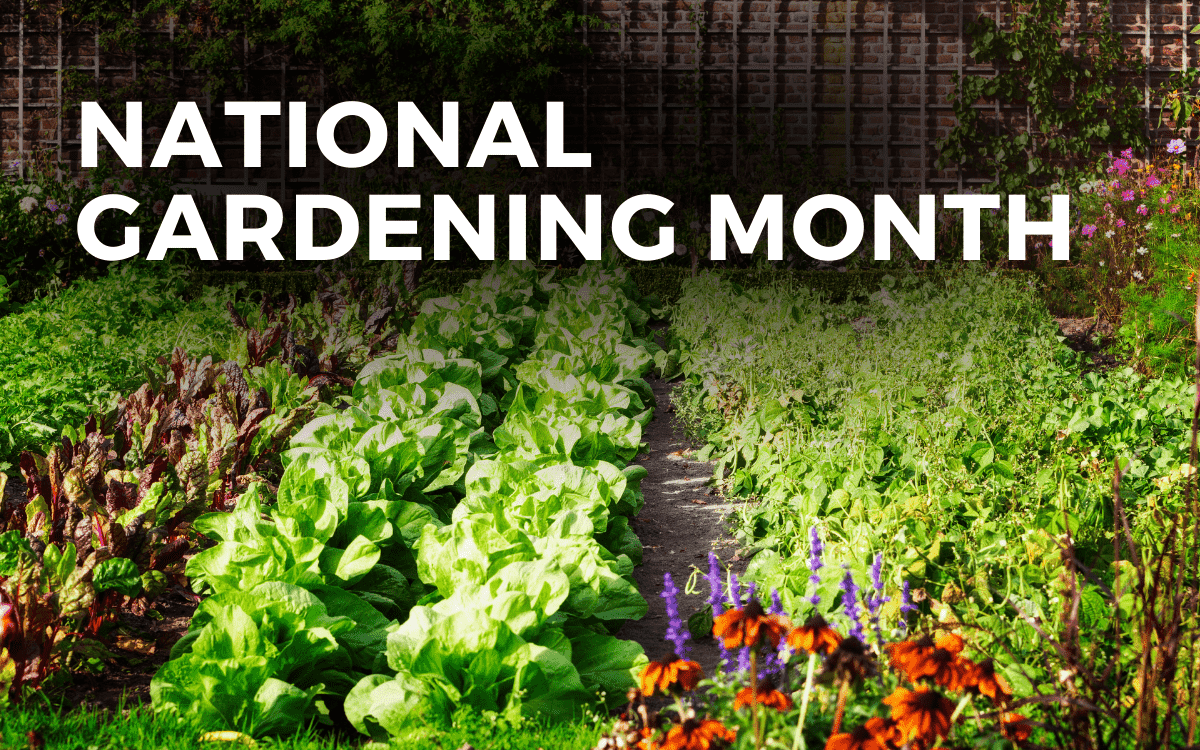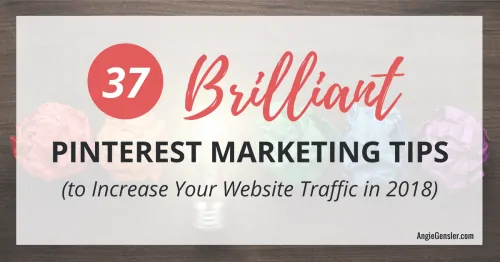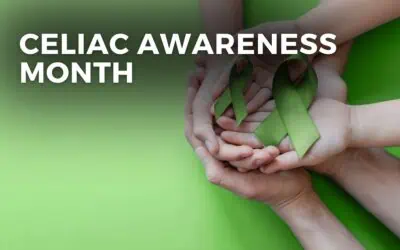As the warm weather arrives, it’s time to get outside and start gardening. National Garden Month is a great opportunity for small business owners and entrepreneurs to celebrate this beautiful season. Whether you’re a seasoned gardener or just getting started, there are plenty of ways to spruce up your outdoor space and showcase your business on social media during National Garden Month. From planting tips for beginners to creative ideas that will help bring attention to your brand, join us as we explore all things related to National Garden Month. Let’s dive into how to celebrate National Garden Month, what hashtags to use on social media as well as what types of gardens you can create, popular garden tools & supplies needed, maintenance tips, and more.

What is National Garden Month?
National Garden Month is a yearly event in April to recognize the significance of gardens and motivate individuals to go outdoors and begin gardening. Gardening can be a great asset, from providing nourishment for households to embellishing communities and boosting mental well-being.
History of National Garden Month
National Garden Month was inaugurated in 2009 by the National Garden Bureau, a non-profit group devoted to advancing domestic gardening in America. The NGB works with garden retailers, nurseries, suppliers, seed companies, universities, and other organizations throughout the United States to promote National Garden Month activities every April.
How to Celebrate National Garden Month
National Garden Month is the ideal time to exhibit your gardening expertise and provide guidance on how to maximize your garden’s potential. Whether you’re a beginner or an experienced gardener, there are plenty of ways to celebrate this special month. Here are some creative ideas for how to get involved:
- Plant a garden. Plant flowers, herbs, or vegetables to create a vibrant landscape in your backyard.
- Start a composting bin. Composting helps reduce food waste and creates nutrient-rich soil for your garden.
- Host a National Garden Month event. Invite friends and family to join you in planting or celebrating National Garden Month by hosting an outdoor gathering.
- Start a garden blog. Share your garden journey and inspire others by starting a blog dedicated to gardening.
- Donate to a local food pantry. National Garden Month is an excellent time to support the community by donating produce from your garden to a local food pantry.
- Get social. Share photos of National Garden Month on social media using the hashtag #nationalgardenmonth.
When it comes are sharing posts on social media, there are so many fun ways that you can celebrate National Garden Month. Here are some ideas:
- Share pictures of your garden in bloom – Show off your hard work by posting photos of beautiful flowers or vegetables that you have grown in your own garden. Tag your garden pics with one or more of the hashtags listed below so others can locate them quickly.
- Offer gardening advice – Share helpful tips about gardening techniques like planting seeds indoors before transferring them outside, composting kitchen scraps into fertilizer, or creating natural pest repellents from household items like garlic cloves or hot peppers.
- Giveaway free plants – If you have extra seedlings growing in pots at home, why not give them away? Post a picture offering up the plants along with instructions on how people can claim them if they live nearby – be sure to add those hashtags.
- Host an online Q&A session – Invite people who follow your page (or other relevant pages) over for an online chat about gardening topics like soil health maintenance or companion planting methods. Bonus points if you offer prizes as incentives.
These are just some of the ways you can celebrate National Garden Month! It’s a great opportunity to show off your green thumb and help spread awareness of the importance of gardening.
Hashtags for National Garden Month
When sharing posts on social media, be sure to use popular and relevant hashtags to get more exposure to your content. For National Garden Month, popular hashtags include:
- #nationalgardenmonth
- #loveyourgarden
- #greenthumb
- #plantlove
- #gardeninglife
- #plantparenthood
You can also employ tags related to the kind of gardening you practice, like #veggiegardening or #flowergardening.
For the complete list of holidays to celebrate on social media in April, visit angiegensler.com/april-holidays
Other Holidays Related to National Garden Month
National Gardening Day takes place annually on April 14th. National Gardening Day provides an excellent opportunity to get your friends, family, and community together to work on gardening projects that will benefit everyone in the long run. National Gardening Day is also a great time to start planning for future garden events as well as promote National Garden Month.
International Compost Awareness Week (ICAW) is celebrated each year in the first full week of May. This holiday focuses on raising awareness about composting, its importance, and how it helps protect our environment. During ICAW, you can share posts that explain the benefits of composting or highlight local businesses that are using compostable materials for their products or packaging.
National Pollinator Week takes place in June every year and begins the Monday after Father’s Day. It celebrates pollinators like bees, butterflies, birds, bats, and other insects who help plants reproduce by transferring pollen from one flower to another. You can use this holiday as an opportunity to educate your followers about the importance of protecting pollinators and what they can do at home to support them, such as planting native flowers or avoiding pesticides when gardening.
World Environment Day is held annually on June 5th and serves as a reminder for us all to take action against climate change and pollution while promoting sustainable living practices around the world. On World Environment Day, you could post tips for reducing waste or energy consumption in everyday life, such as switching off lights when not needed or taking shorter showers. You could also encourage people to join campaigns related to environmental protection, like beach clean-ups or tree-planting initiatives near your business location if available.
For more holidays, download our free calendar with over 1,000 fun and unique holidays to celebrate this year. Head to angiegensler.com/holiday-calendar to grab your free copy!
National Garden Month Dates
| Year | Date | Day |
|---|---|---|
| 2024 | April 1 | Monday |
| 2025 | April 1 | Tuesday |
| 2026 | April 1 | Wednesday |
| 2027 | April 1 | Thursday |
| 2028 | April 1 | Saturday |
| 2029 | April 1 | Sunday |
Benefits of Gardening
Gardening offers a plethora of advantages, from increased physical fitness to improved air quality. Growing your own produce can help you save money on grocery bills while also providing nutritious meals for the family. Furthermore, gardening can be used as an outlet for creative expression through landscaping design projects, and it can foster stronger relationships among family members who work together on their garden projects. Additionally, environmental conservation efforts such as composting or rainwater harvesting are encouraged when partaking in gardening activities.
Types of Gardens
Vegetable Gardens:
Vegetable gardens are a great way to enjoy fresh produce from your own backyard. Planting vegetables in raised beds, containers, or directly into the ground can be an enjoyable and rewarding experience. You can cultivate a wide range of vegetables, from tomatoes and peppers to cucumbers, squash, beans, and carrots. It’s important to choose varieties that will thrive in your climate and have enough space for them to grow. You should also make sure you know how much water they need so you don’t overwater or underwater them.
Gardeners often opt for flower gardens due to the vibrancy and hues they can bring throughout the year. Varying by locale, some of the most popular blooms to cultivate are roses, daisies, marigolds, and petunias. When planting flower beds, it’s important to consider sun exposure as well as soil type, so the plants get what they need to flourish. If you want something low maintenance, try planting perennials that come back each year with minimal effort on your part.
Herb Gardens:
Herbs not only add flavor to dishes but can also be used for medicinal purposes too. Popular herbs like basil, oregano, and thyme are easy to grow indoors or outdoors depending on their needs – some require full sun while others prefer partial shade, so check before planting. Don’t forget about mint either – it’s an incredibly versatile herb that makes delicious tea when dried or added raw for extra flavor in salads or sandwiches.
Container Gardens:
Container gardening is perfect if you don’t have a lot of space since pots can fit just about anywhere. Many veggies do well in containers, including tomatoes (just remember bigger pot = bigger tomato.), peppers (bell peppers tend to work best), lettuce greens, and even strawberries if given enough room. Just make sure whatever container you use has good drainage holes at the bottom otherwise, things could get soggy real quick…and nobody likes soggy veggies, right?
Aquaponics is an interesting combination of aquaculture (raising fish) with hydroponics (growing plants without soil). The fish waste provides nutrients for the plants while the plant roots filter out toxins from the water, creating a self-sustaining ecosystem – pretty cool. This type of gardening requires quite a bit of knowledge about both fish keeping and plant care, so research thoroughly before diving head first into this one.
Gardens can vary significantly in their form and size, so it’s essential to grasp the various kinds of gardens before you start planting. Let’s now look at some advice for those just beginning their gardening journey.
Planting Tips for Beginners
Choosing the Right Location for Your Garden:
When it comes to planting a garden, location is key. Consider factors such as sunlight and soil quality when selecting the perfect spot for your garden. If you’re in an area with heavy rainfall, make sure you select a spot that has proper drainage, so water doesn’t accumulate and drown your plants. Also, consider accessibility—you don’t want to have to climb over furniture or dig through piles of toys just to get to your garden.
For optimal growth, consider the type of soil that will best suit your plants; clay soils retain moisture better than sandy soils, yet may be harder for roots to penetrate. Clay soils tend to hold moisture better than sandy soils, but they can also be more difficult for roots to penetrate. Sandy soils drain quickly but may require more frequent watering. Once you determine which type of soil is right for you, look into fertilizers specifically designed for gardens; these are typically composed of nitrogen, phosphorus, and potassium compounds that help promote healthy plant growth.
Understanding Sunlight Requirements:
Different types of plants require different amounts of sunlight in order to grow properly—some need full sun while others prefer partial shade or even full shade conditions. Take note of how much natural light each part of your garden receives throughout the day before deciding where certain plants should go; this way, you can ensure all your plants receive adequate sunshine without burning them up with too much heat.
Watering correctly is essential if you want healthy-looking flowers and vegetables from your garden. To keep things simple, start off by giving each plant about one inch (2 cm) per week; however, some areas may require additional watering depending on their climate/weather patterns, so check regularly during hot spells or dry periods. Lastly, mulch helps reduce weeds while retaining moisture in the soil; spread two inches (5 cm) around newly planted seeds, then add an extra layer every few weeks until it reaches four inches (10 cm).
Properly preparing the soil, selecting the right plants for your garden, and understanding sunlight requirements are essential steps in planting a successful garden. With these basics covered, you can move on to other important tasks, such as pruning and deadheading plants or controlling weeds and pests to ensure that your garden is healthy all season long.
Garden Maintenance Tips
Pruning and Deadheading Plants:
Pruning is a vital part of garden maintenance. It helps keep plants healthy, encourages new growth, and shapes the plant to give it an attractive appearance. To prune correctly, you should use sharp shears or scissors to cut away any dead branches or leaves. Deadheading is also important for keeping your plants looking their best; this involves removing spent flowers from the plant so that it can focus its energy on producing new blooms instead of forming seeds.
Controlling Weeds and Pests:
Weeds can quickly take over a garden if they’re not kept in check. Manually removing weeds or using a hoe can help contain their growth without affecting other vegetation. For more stubborn weeds, herbicides may be necessary but should be used sparingly as they can damage beneficial insects like bees and butterflies. Pest control is also important for keeping your garden healthy; natural methods such as introducing beneficial predators into the area are often preferable to chemical pesticides which can have negative impacts on wildlife populations in the area.
Composting Basics:
Composting is an easy way to recycle organic waste while enriching the soil with valuable nutrients at the same time. Gather kitchen scraps and yard waste, such as vegetable peels and grass clippings, to form your compost pile. The pile will break down over time into nutrient-rich “black gold” that you can use in your garden beds. Be sure to turn the pile every few weeks, so oxygen reaches all parts of it – this will speed up decomposition significantly.
Crop rotation is not just something farmers do – home gardeners should practice it too. This means planting different crops in different areas each year; doing so prevents diseases from building up in one spot since some pests only attack certain types of plants, while others require specific nutrients found within particular soils. Rotating crops around keeps them healthier overall because each variety gets access to fresh soil with plenty of available nutrition throughout its life cycle.
Garden maintenance is essential for keeping your garden looking its best and ensuring it remains healthy. By following the tips outlined above, you can ensure that your plants remain in peak condition throughout National Garden Month and beyond. Creative gardening ideas offer a great way to add interest to any outdoor space, with techniques such as vertical gardening or edible landscaping providing unique opportunities for experimentation.
Creative Gardening Ideas
Vertical Gardening Techniques:
Vertical gardening is an increasingly popular way to maximize the use of limited space. This approach is applicable for a plethora of vegetation, ranging from vegetables and herbs to flowers and shrubs. A simple trellis or lattice structure provides support for climbing vines, while shelves and racks can be used to create multiple levels in small areas. Hanging baskets are another great option that allows you to grow plants up instead of out.
Incorporating edibles into your garden design is an excellent way to have a beautiful and functional landscape. Fruit trees, such as apple, cherry, peach, and pear can be included in your garden to add beauty while also yielding delectable fruit. Herbs like oregano, thyme, rosemary, basil, and chives add flavor to meals while also providing attractive foliage year-round. Vegetables such as tomatoes, peppers, squash, and beans can also be incorporated into decorative landscape designs with careful planning and placement.
Constructing a wildlife garden can be an amazing way to invite birds and other creatures while supplying them with sustenance. Bird feeders filled with seed will draw feathered friends in droves if they have adequate shelter nearby in which they feel safe nesting or roosting during the day or night hours, respectively. Native flowering shrubs provide nectar sources for bees and butterflies while evergreen trees offer protection from winter winds, making it easy for all kinds of creatures, large or small, to find refuge within your backyard oasis.
Creative gardening ideas can be used to transform any outdoor space into a beautiful and functional garden. Moving on, popular tools and supplies are essential for successful gardening projects.
Popular Garden Tools & Supplies
Hand Tools for Gardening:
Hand tools are the most basic and essential pieces of gardening equipment. Shovels, spades, rakes, hoes, trowels, and pruners are among the most basic gardening implements necessary for any green-fingered enthusiast. These tools are perfect for digging holes to plant bulbs or seedlings; weeding around delicate plants; cutting away dead growth from perennials; removing stones from soil beds; and cultivating compost piles. For those with limited space or budgets, hand tools provide a great way to get started in gardening without investing in expensive power tools.
Power Tools for Gardening:
Power tools can make light work of heavier jobs such as preparing large areas of land for planting vegetables or flower beds. Chainsaws can be used to cut back overgrown trees and shrubs, while weed eaters help keep grass edges neat and tidy. Rotavators break up hard ground quickly so that it’s easier to dig out beds ready for sowing seeds or laying turf. Electric hedge trimmers also come in handy when tackling unruly hedges.
Gardening equipment and materials can be a game-changer for crafting an exquisite garden, so make sure to acquire the most suitable items for your requirements.
Conclusion
National Garden Month is a great time to celebrate the beauty and joy of gardening. From novice gardeners just getting started to experienced green thumbs looking for new ideas, there’s something here for everyone. Whether you’re creating an outdoor oasis or growing your own food supply, National Garden Month provides the perfect opportunity to get creative with plants and enjoy nature’s bounty. So this May, let’s come together as a community and celebrate National Garden Month by tending our gardens and sharing posts on social media using the hashtag #nationalgardenmonth.
















